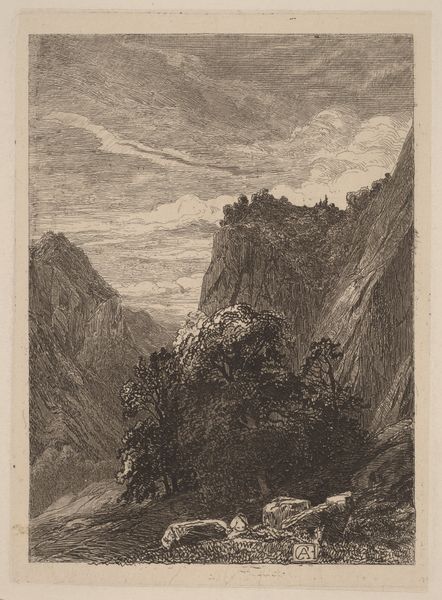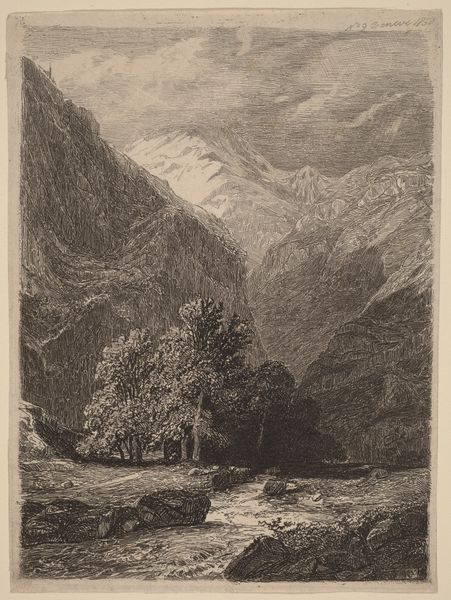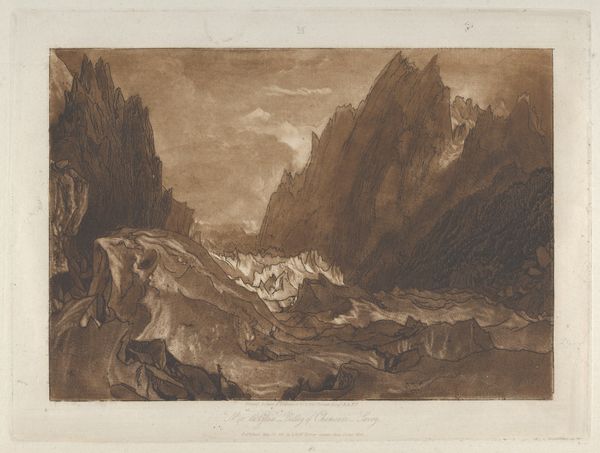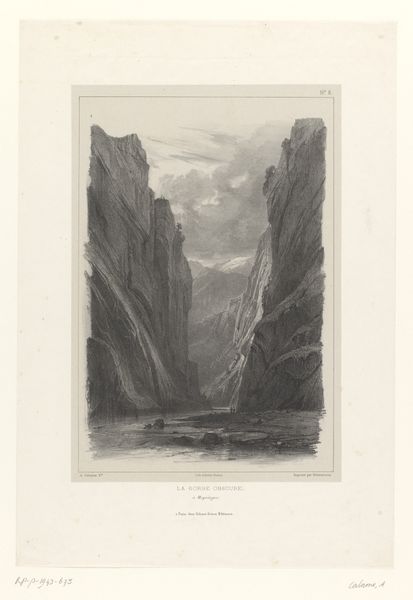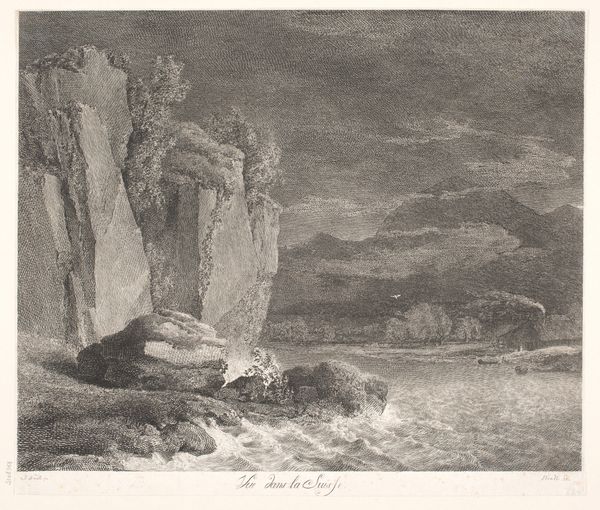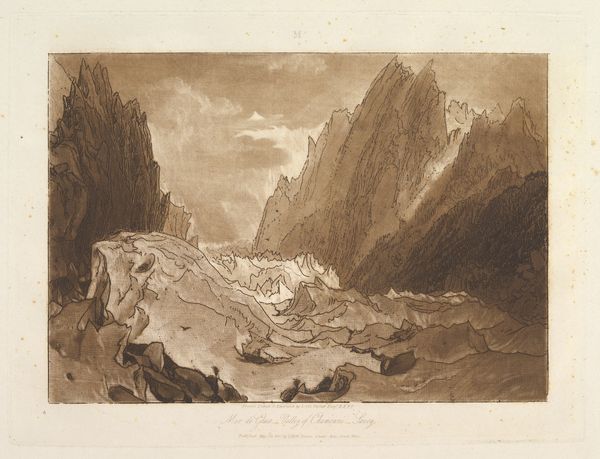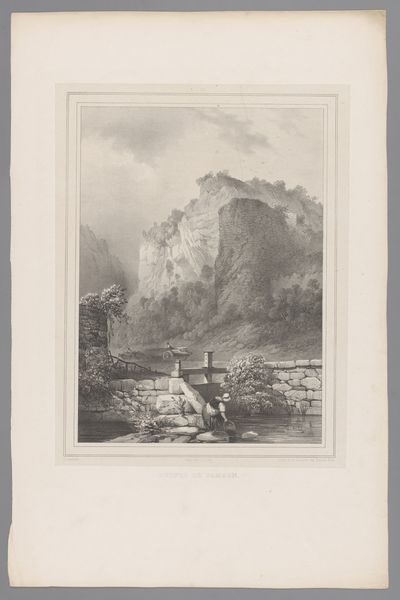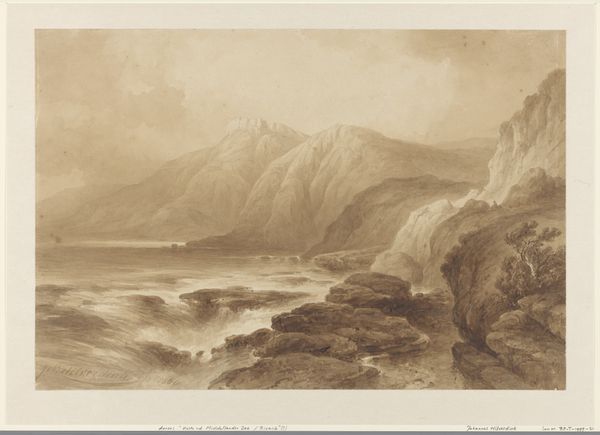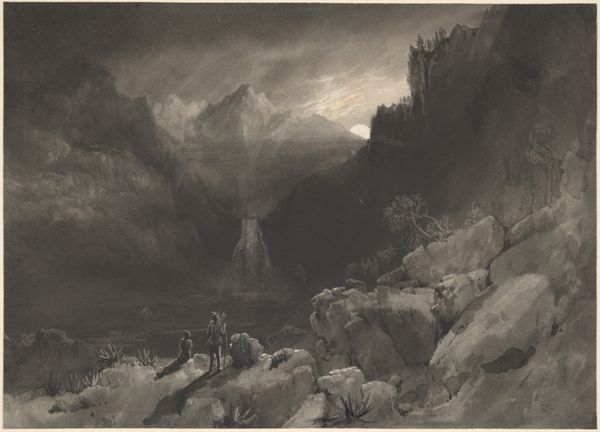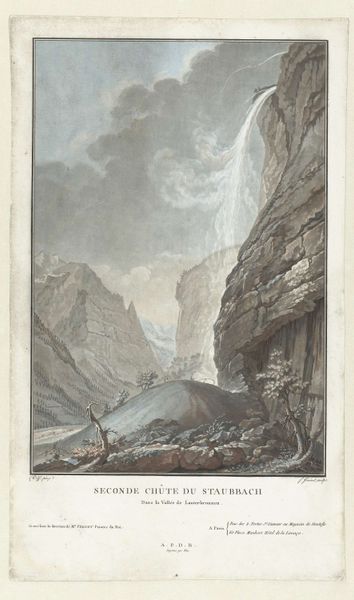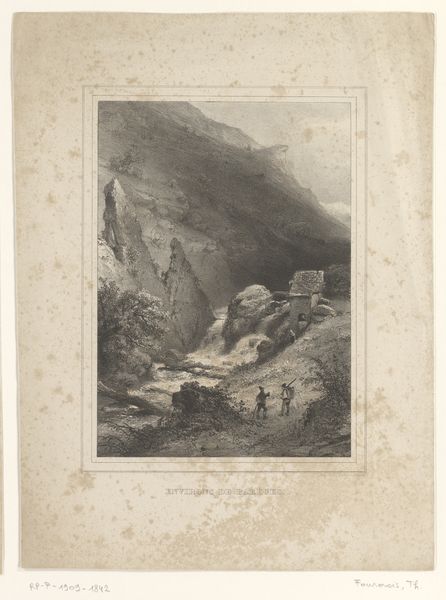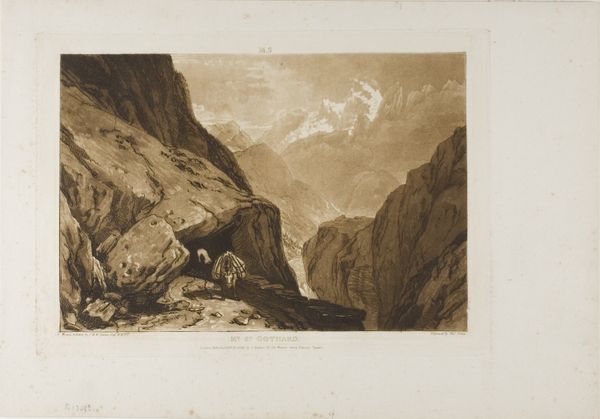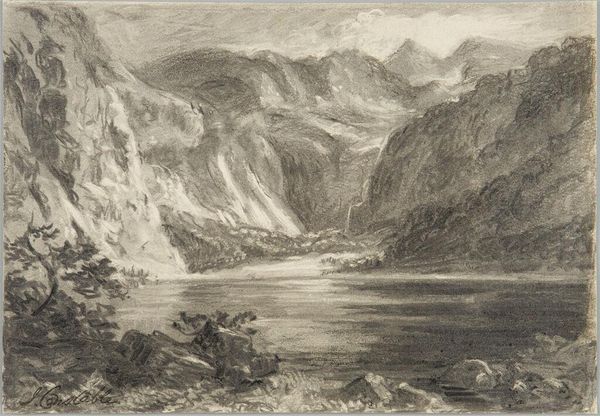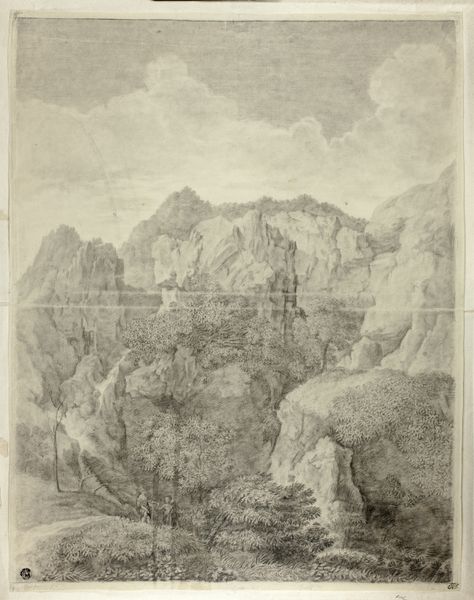
print, etching, engraving
# print
#
etching
#
landscape
#
romanticism
#
line
#
engraving
#
realism
Dimensions: plate: 10 x 8.6 cm (3 15/16 x 3 3/8 in.) sheet: 35.1 x 27 cm (13 13/16 x 10 5/8 in.)
Copyright: National Gallery of Art: CC0 1.0
Curator: This is Alexandre Calame's "Cliffs in a Storm," created in 1838, utilizing the techniques of etching and engraving. Editor: The first thing that strikes me is the contrast. There's this very dark, almost oppressive sky looming over these dramatically lit cliffs. A stark reminder of nature’s overwhelming power, isn't it? Curator: Absolutely. And the historical context here is key. Calame was working during a period of burgeoning Romanticism. The style prized emotion, and this piece really speaks to that sensibility, particularly ideas around the sublime and the awesome force of nature, something beyond our control. How does that play into contemporary theory, in your view? Editor: I think it echoes in discussions about climate change. We see ourselves as these figures dwarfed by the consequences of global events. We're still grappling with that Romantic awe, but now it's tinged with ecological anxiety. These two small figures on the beach underscore human vulnerability in the face of larger powers, maybe not just natural, but societal as well. Curator: Yes, consider the sociopolitical dimensions. Think about who would have had access to these kinds of images, this kind of landscape. It’s a privilege to experience and then own this mediated view of nature, to possess it almost. The public role of this kind of art became, in some ways, a marker of class. Editor: That's so true. And looking at it today, those power dynamics persist. We consume images of "untouched" nature knowing the social and economic factors that shape our relationship with those spaces. The etching's linearity really emphasizes the sheer scale and overwhelming presence of those imposing cliffs against the fragility of human existence. The artist’s ability to translate the tonal range with only line is really quite remarkable. Curator: It is. And that translation itself reveals Calame’s biases, his cultural lens. Even "realism" as a style choice is loaded with perspective. This print allows us to see a convergence of stylistic intention within the romanticism art period. Editor: Seeing the anxiety encoded here and recontextualizing that in modern experiences offers an entry point into both the artwork itself and broader, current sociopolitical discourses. Curator: Exactly, viewing it through various lenses—historical, cultural, personal—allows for such richer engagements. I hope it prompts similar reflection for everyone.
Comments
No comments
Be the first to comment and join the conversation on the ultimate creative platform.
